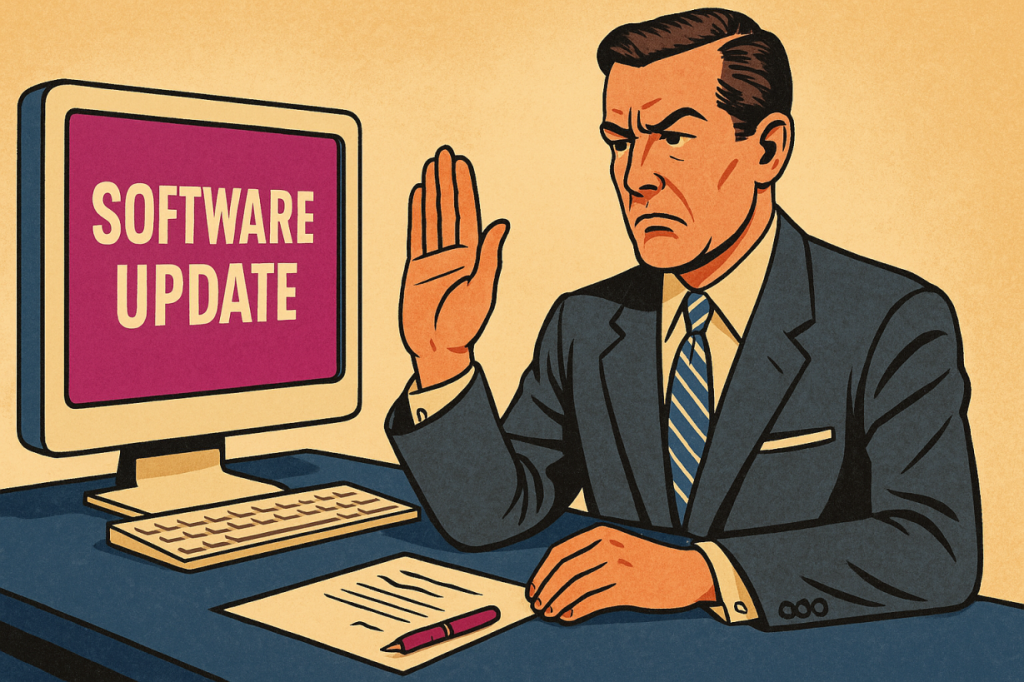
Stop the Madness: Why Forced ERP Updates Hurt Businesses and What to Do Instead
ERP software vendors have long demanded that clients keep pace with an endless treadmill of updates. These updates, often mandatory, can wreak havoc on operations, introduce risk, and deliver little—if any—real value. The question many CIOs and IT leaders are asking is simple: Why are we still tolerating this?
Let’s be clear: many of these updates aren’t designed to benefit the end user. Instead, they are often about the vendor addressing their own technical debt, consolidating back-end systems, or introducing monetized features. Meanwhile, clients pay the price—literally and operationally.
The Hidden Cost of Forced Updates
- Breakage of Integrations and APIs
A single forced update can break a previously working API, plugin, or integration—triggering a domino effect of failures across departments. - Feature Deprecation and Disruption
Updates may disable or remove features that your team relies on. A report template disappears. A field is renamed. A navigation path is changed. Suddenly, what worked no longer does. - Operational Downtime
Even well-orchestrated updates require downtime, testing, and retraining. Multiply that across multiple departments and the costs become significant. - Unexpected Data Migration or Loss
Structural changes to the ERP system may require data migration, which introduces the risk of data inconsistency, corruption, or loss. - Employee Fatigue and Frustration
Frequent, unexplained changes erode trust in the system. Staff members lose confidence in tools they need to rely on every day.
The Real Problem: You’re Paying to Solve Their Problems
Many updates serve to clean up a vendor’s internal codebase or reposition them for future offerings. Clients end up funding this technical housekeeping through licensing fees, consulting hours, and retraining costs.
So, what’s the alternative?
A Better Model: Application Stability with Platform Flexibility
Tools like Formever offer a modern alternative. With a no-code, open-source platform that builds the business logic separately from the platform layer, Formever allows for the underlying software to be upgraded without breaking the business application itself.
Think of it like a spreadsheet: Excel gets updated, but you can still open a spreadsheet from 2010, and it works as expected. That’s the power of decoupling the application logic from the platform.
- No forced UI changes
- No risk of losing critical functionality
- Full control over when and how updates are applied
Final Thought
ERP vendors have conditioned us to accept disruption as the cost of progress. But it doesn’t have to be this way. It’s time for businesses to demand tools that respect their time, budget, and operational integrity.
The next time a vendor says “You need this update,” ask yourself: who really benefits?
With platforms like Formever, you can finally say: not this time.
